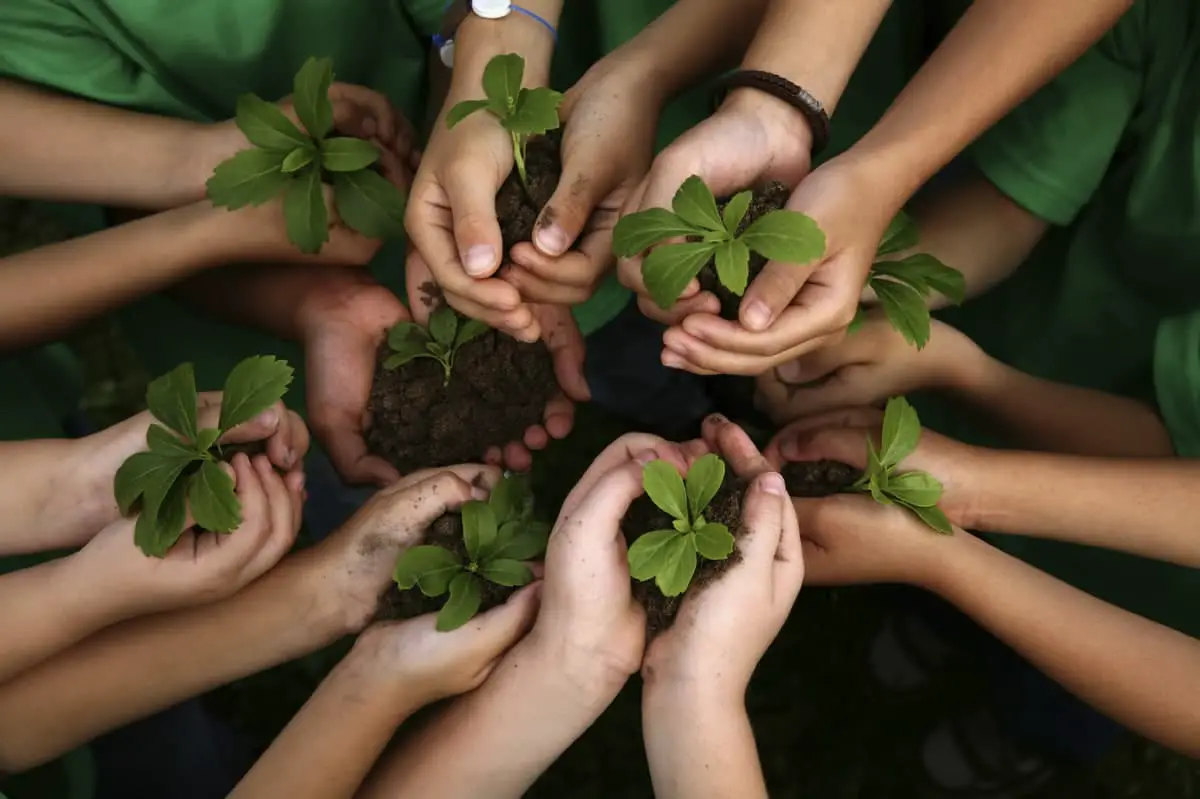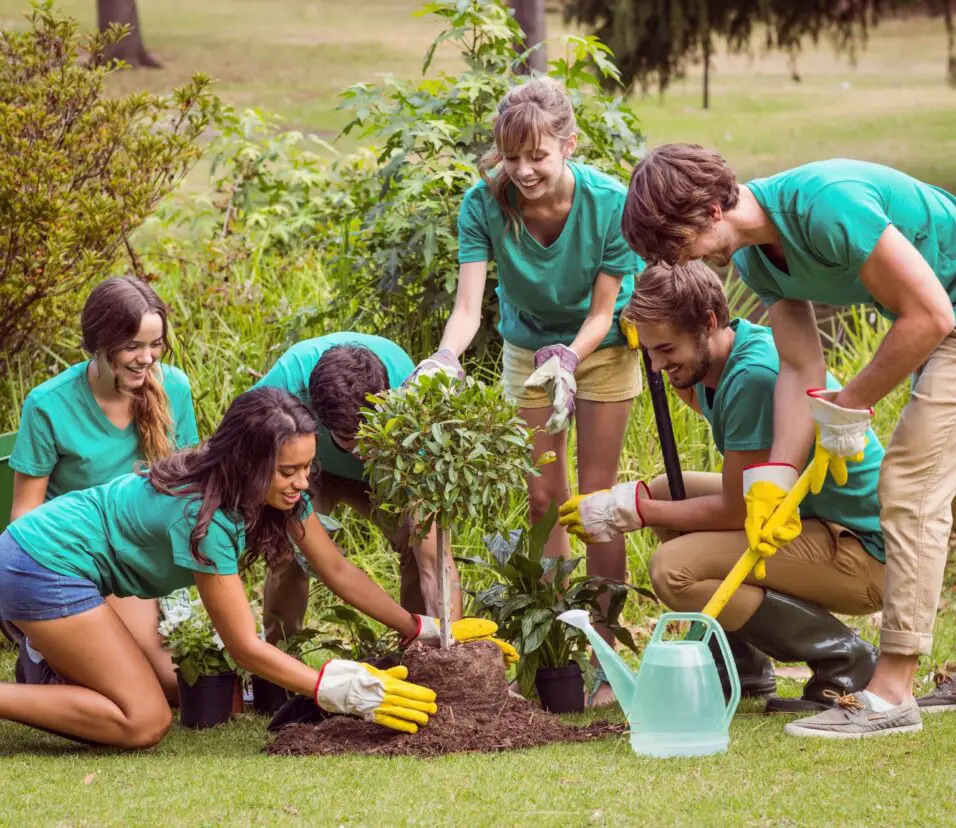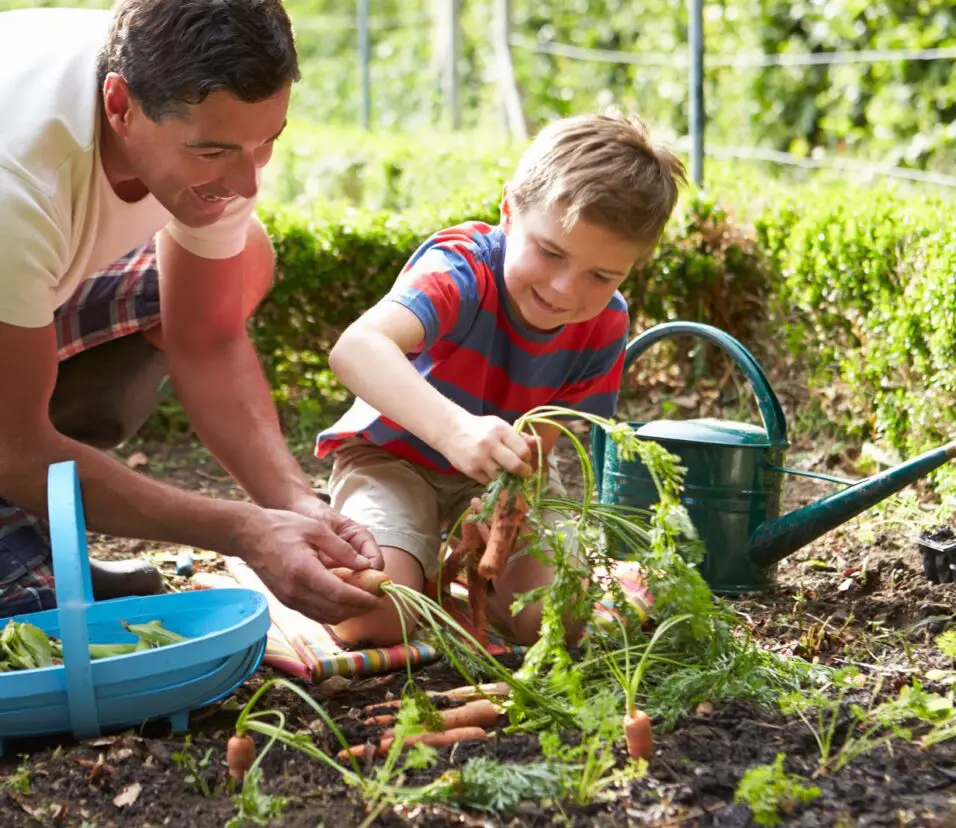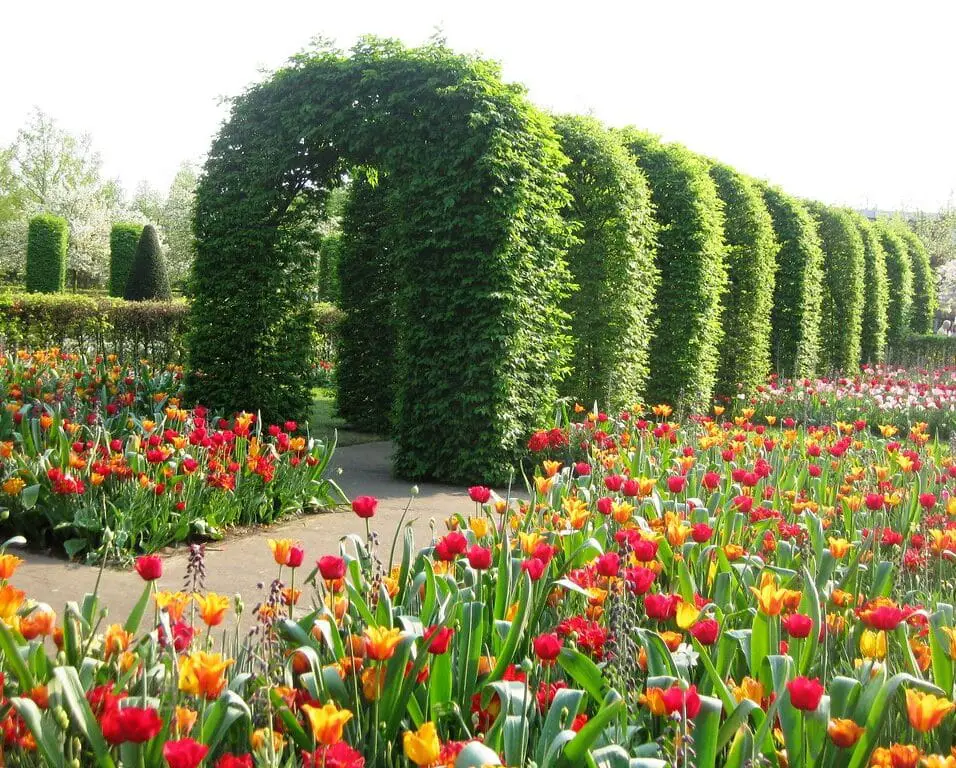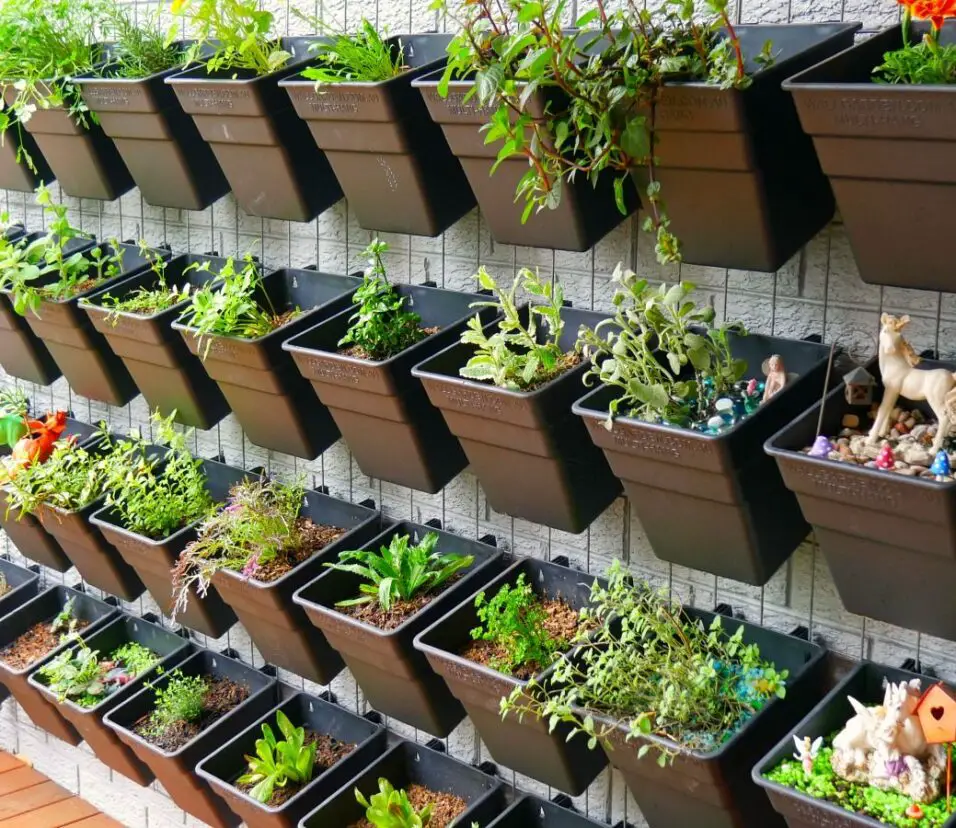How Does Gardening Help The Environment
Introduction
How Does Gardening Help The Environment: In an era marked by growing environmental concerns, the role of gardening has emerged as a vital and often underestimated ally in the battle against ecological degradation. “How Does Gardening Help the Environment” delves into the intricate connection between cultivating plants and fostering a healthier planet. Beyond its aesthetic appeal, gardening is an embodiment of sustainable practices that can significantly contribute to environmental preservation.
Gardening absorbs and sequesters carbon dioxide from the atmosphere, minimizing climate change. Native and pollinator-friendly plants strengthen local ecosystems and increase biodiversity, reducing habitat loss and invading species. Composting and natural fertilizing in gardens reduce chemical inputs, protecting soil and water quality.
We will discover the synergistic relationship between human interaction with the planet and environmental resilience through gardening. Understanding how our gardening methods affect the natural web empowers us to become land stewards and sow positive change for future generations.
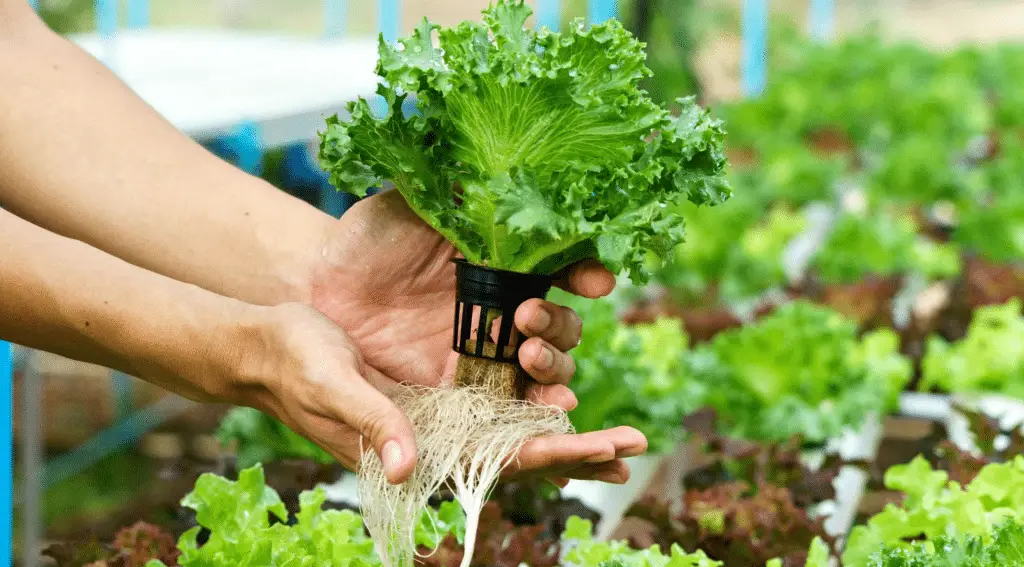
What are the importance of gardening to the environment?
Gardens provide us with fresh produce, clean air and create habitat for wildlife. They also help reduce food miles and carbon emissions. But we shouldn’t just stick to growing flowers – there are many different types of plants that can benefit our health too.
Gardening holds significant importance for the environment, contributing to both local ecosystems and global sustainability. Firstly, gardens serve as vital habitats for diverse flora and fauna, fostering biodiversity. They provide food, shelter, and breeding grounds for insects, birds, and other wildlife, supporting overall ecosystem health. Additionally, well-maintained gardens help combat soil erosion, conserving precious topsoil and preventing sediment runoff into water bodies.
Moreover, gardening promotes carbon sequestration by encouraging the growth of plants that absorb atmospheric carbon dioxide. This aids in mitigating climate change by reducing greenhouse gas levels. Urban gardens also enhance air quality by absorbing pollutants and releasing oxygen, thereby improving the overall well-being of surrounding communities.
Gardens can be spaces for sustainable practices such as composting, rainwater harvesting, and organic farming. These activities minimize waste generation, conserve water resources, and reduce the need for chemical fertilizers, pesticides, and herbicides that can harm the environment. Gardening plays a vital role in preserving biodiversity, mitigating climate change, enhancing air and water quality, and promoting sustainable practices. Its positive impact on the environment makes it an essential endeavor for a healthier and more sustainable planet.
How can we garden for the environment?
Buy a composter and compost your kitchen and garden scraps. Monitor how much water you’re using, on a monthly or quarterly basis and figure out how you can reduce use. Use mulches to reduce the loss of water from your garden. Buy peat free compost and plants.
Native plant gardens feed local wildlife and preserve water since they are climate-adapted and low-maintenance. Avoiding chemical pesticides and fertilizers protects soil and water. Drip irrigation and mulching conserve water and promote plant health. Diversity in plant species, bird feeders, and insect hotels draws beneficial organisms, balancing the ecology.
Kitchen and yard trash composting lowers landfill waste and nourishes soil without synthetic fertilizers. Beneficial insects and other species live in undisturbed garden spaces. By employing manual tools and ecological building materials, you can reduce your garden’s carbon footprint. Knowledge-sharing and collaboration with local gardening communities can promote green practices.
Environmentally conscious gardening comprises choosing native plants, reducing chemical use, conserving water, generating habitat variety, composting, and using mindful gardening procedures and materials.
What are the 10 benefits of gardening?
11 Unbelievable Benefits Of Gardening
- Gardening boosts mood
- Improve the quality of life
- May lower the stress level
- Help to encouraging mindfulness
- May enhance the immune system
- Help to burn calories
- May strengthen your bones
- Helps to control blood sugar level
Gardening offers a multitude of benefits that extend beyond the realm of plants. Firstly, it provides a therapeutic escape from daily stresses, promoting mental well-being and reducing anxiety. Engaging in gardening activities also offers moderate physical exercise, enhancing overall fitness and flexibility.
Gardens beautify surroundings, increasing property value and creating serene spaces for relaxation and social gatherings. Cultivating plants fosters a sense of responsibility and connection with nature, teaching valuable life skills such as patience and nurturing.
Growing your own fruits, vegetables, and herbs yields fresh and organic produce, promoting a healthier diet and reducing carbon footprint associated with food transportation. Gardens support biodiversity by providing habitats for insects, birds, and beneficial organisms that contribute to ecosystem balance.
Gardening encourages learning about plant biology, ecosystems, and sustainable practices. It can foster a sense of community through shared gardening spaces and collaborative projects. Moreover, gardening can save money on groceries and improve air quality by absorbing pollutants and releasing oxygen.
The benefits of gardening encompass mental and physical well-being, skill development, environmental consciousness, and even financial savings. Whether for personal pleasure or community enrichment, gardening is a rewarding pursuit with far-reaching advantages.
How does a gardener help to make our world beautiful?
A gardener is experienced in keeping a garden healthy and productive. They are often planting and maintaining a good environment by watering, fertilizing, and even weeding the area. They would prune back some plants and may remove dead plants from the area.
Through their hard work and deep awareness of nature, gardeners improve our world. They transform ordinary rooms into stunning ones by meticulously choosing and arranging plants, flowers, and landscaping. A gardener creates a symphony of colors, textures, and smells that uplift the spirit and create harmony via deliberate design.
Gardeners can transform ordinary settings into peaceful havens. Their plant care creates beautiful landscapes that inspire awe and appreciation for nature. They offer peaceful spaces to enjoy nature by keeping well-kept lawns, flowerbeds, and trees.
Beyond aesthetics, gardeners help the environment. They select native plants that sustain ecosystems, pollinate, and minimize soil erosion. Gardeners clean the air, reduce urban heat islands, and conserve water. Gardens become living art with gardeners’ artistic touch, bringing beauty, tranquillity, and a deep connection to nature.
What role does gardening play in mitigating climate change and reducing carbon dioxide levels?
Gardening is crucial to reducing global carbon dioxide and climate change. Greenhouse gas emissions can be reduced via gardening’s complex carbon sequestration systems.
Photosynthesis converts airborne carbon dioxide into organic matter like leaves, stems, and roots. This organic stuff feeds plants and stores carbon in the soil. Gardeners help store carbon by growing a variety of plants. Well-maintained gardens promote healthy plant development, which increases carbon absorption and storage.
Gardening also promotes tree and shrub planting. Trees are particularly effective carbon sinks because they can absorb vast amounts of carbon over time. Their leaves and woody fibres store carbon, lowering atmospheric CO2. Gardening incorporates trees and plants into urban and suburban settings to reduce human-caused carbon emissions.
As a natural carbon sequester, gardening helps fight climate change. Gardeners who prioritize plant diversity and growth help reduce carbon dioxide emissions.
How does gardening contribute to the preservation of biodiversity and the protection of local ecosystems?
Gardening helps maintain nature’s delicate balance by preserving biodiversity and local ecosystems. Gardeners create different habitats for flora and fauna by choosing local plants.
Local insects, birds, and pollinators depend on native plants, which are adapted to their climate and soil. Growing plants provide food and shelter for numerous animals, creating a healthier and more vibrant ecosystem. However, non-native plants can outcompete native species for nutrients and change the complex web of creature interactions in these delicate ecosystems.
Biodiversity-focused gardens also build interconnected habitats for wildlife. Well-planned gardens allow organisms to freely migrate, fostering genetic diversity and resilience. Organic farming also decreases pesticide and fertilizer use, reducing soil and water contamination that can harm local flora and animals.
Each garden patch helps the ecosystem, illustrating conservation efforts. Gardeners help preserve biodiversity and local ecosystems for future generations by supporting native species, limiting ecological disruptions, and creating interconnected habitats.
What is the connection between native plant cultivation in gardens and supporting pollinators?
The interconnectedness of flora and wildlife is shown by the importance of native plant gardens for pollinators. Native plants and pollinators have adapted to survive together.
Native pollinators depend on native plants’ nectar, pollen, and bloom timing. These plants feed bees, butterflies, and hummingbirds. Gardeners provide a buffet of resources for native species, which helps local ecosystems.
Non-native plants may lack native pollinator-friendly traits, making them less successful foragers and reproducers. This gap can disrupt pollination, reducing pollinator populations and plant reproduction.
Thus, native plant cultivation in gardens promotes a healthy interaction between plants and pollinators, providing a steady diet for these vital organisms. We protect pollinator populations and the health and diversity of our natural world by cultivating native species.
What are the broader implications of incorporating eco-friendly gardening methods for a more sustainable future?
Incorporating eco-friendly gardening methods carries profound implications for shaping a more sustainable and resilient future on both local and global scales. By embracing practices that prioritize environmental stewardship, gardeners contribute to a range of positive outcomes that extend far beyond the confines of their plots.
Eco-friendly gardening methods, such as composting, natural fertilization, and water conservation, reduce the reliance on synthetic chemicals and minimize the carbon footprint associated with conventional gardening. These practices safeguard soil health, prevent water pollution, and mitigate greenhouse gas emissions, aligning with the broader goals of sustainability and climate resilience.
Moreover, eco-friendly gardens provide critical habitats for wildlife, bolstering local biodiversity and enhancing ecosystem services. The preservation of native plants and pollinators nurtures intricate ecological relationships, fostering the health of both plant and animal populations. This, in turn, contributes to the overall stability of ecosystems and helps combat the loss of biodiversity that threatens our planet’s well-being.
On a societal level, eco-friendly gardening practices inspire environmental consciousness and sustainable living. By adopting these methods, gardeners serve as role models, encouraging their communities to adopt greener practices. The cumulative effect of widespread eco-friendly gardening can catalyze a shift towards more responsible consumption, reduced waste, and a heightened appreciation for the natural world, thus steering us closer to a harmonious and sustainable future.

Conclusion
The remarkable interplay between gardening and the environment underscores the profound impact that seemingly small actions can have on our planet’s well-being. As we’ve explored the myriad benefits of gardening, from its role in carbon sequestration to the promotion of biodiversity and sustainable resource management, it becomes evident that this age-old practice is a powerful tool at our disposal.
Through our gardens, we have the ability to mitigate climate change, nurture vital ecosystems, and encourage sustainable practices. The act of tending to plants serves as a poignant reminder of our interconnectedness with nature, highlighting our responsibility to preserve and restore the delicate balance that sustains life on Earth. Moreover, gardening’s therapeutic effects on individuals’ mental and emotional well-being further reinforce its significance, forging a direct link between personal and planetary health.
As we contemplate the insights gained from this exploration, it becomes apparent that each garden nurtured is a testament to our commitment to environmental stewardship. By embracing eco-friendly gardening methods, promoting local biodiversity, and cultivating awareness about the broader ecological implications of our choices, we actively contribute to a more resilient and vibrant world.
“How Does Gardening Helps the Environment” underscores that the act of gardening transcends the boundaries of our backyard plots—it embodies a collective endeavor towards a greener, more sustainable future. By embracing the lessons learned from our gardens, we can sow the seeds of change, fostering an environment where nature and humanity flourish in harmonious coexistence.



